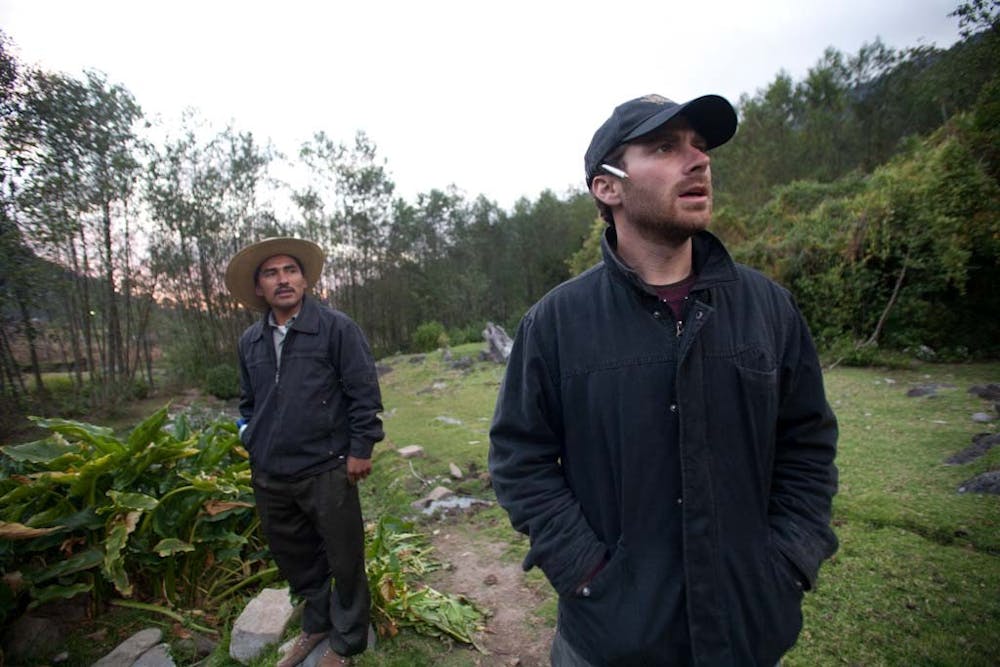Enroll in the Community Building and Latin America course
Students have until Aug. 29 to enroll in the Community Building and Latin America course. The course meets Mondays at 6:30 p.m. in Architecture Building room 310, and students of all majors are welcome to enroll. Undergraduate students can sign up for the course PLAN 498 and graduate students can sign up for PLAN 598.
Source: Ball State University Communications Center
Nate Howard has never taught a class at Ball State or at the university level, but he has 17 years of experience in Latin America that prepared him for instructing his first college course.
Since 2006, Howard has been studying and working for multiple non-governmental organizations, learning about different countries and their cultures. He worked for the Mennonite Central Committee (MCC) for nine years and then started the Utz Kaslimaal Collective in Guatemala in 2015 and the Wájaro Foundation in Colombia in 2016.
“They have what is called a ‘Seed Program,’ which is a two-year [program],” Howard said. “It’s almost like a Peace Corps program where graduates from a university spend two years doing some kind of grassroots service. The program combines education, learning and service at the same time.”
Howard had not taught before, but his master’s degree in international economic development from Eastern University in Philadelphia prepared him to be in charge of the Seed Program for the MCC in Colombia from 2012-15, where he helped teach and structure the program for students. He also was in charge of the Hurricane Stan relief program in Guatemala and El Salvador from 2006-08 and a rural development program in San Marcos, Guatemala from 2008-12.
Now, Howard is back in the United States, teaching Ball State’s new Community Building and Latin America course in the Department of Urban Planning. The course uses Howard’s experiences to explain how Indigenous groups live in Latin America and looks at how Western worldview impacts the way they live.
“A flourishing rural sector is kind of one of the things that suffer as a result of that model,” Howard said. “[The course will also] focus on what it would look like for us to learn from Indigenous communities in Latin America and show where these worldviews clash.”
Howard also said the course will explain why there’s “massive amounts” of Central Americans migrating to the United States, why there are problems with “megacities” in Latin America and the failed anti-imperialist models in countries like Venezuela and Cuba.
He is planning on hosting two or three guest lectures for the course via Skype, which will be from Indigenous people he met while working in Latin America. He also plans on having students meet with three or four people over Zoom, with most of them being Indigenous leaders.
Howard said he will have in-class lectures and some required reading, but the class will heavily emphasize student participation.
“We don’t have required texts — it will just be things that I have read over the years or things that really hit the nail on the head to have a really good class discussion,” Howard said. “It’s not focused so much on busy work … there will be some application in writing, but I think the goal is to [end with] a final paper where somebody is talking about how this class connects with their own life.”
Howard said the idea for the course came from conversations with Scott Truex, associate professor of urban planning and chair of the Department of Urban Planning.
“We’ve been trying to develop a partnership with a couple of organizations that I’m involved with in Latin America and Ball State,” Howard said. “We may be bringing groups [of students to Latin America] for a week or a two-week intensive course on some fields or focuses related to their field of study.”
Howard and Truex have known each other for 15 years and met before Howard went back to school and was living in Muncie. Howard had known Truex’s wife because they were colleagues at Muncie Community Schools, and she said Howard should meet Truex because they had similar interests.
Because of their friendship, Truex said, creating the class was “fairly easy.”
“Whenever he would come back [to the U.S.], we would get together for coffee,” Truex said. “So I’ve been following his work and all the different organizations and communities and have been talking about how we could partner [with them]. All of these incredible experiences fit really well with our program … It wasn’t a hard decision to make.”
Because Truex is the urban planning department chair, he was able to get the course added to the department after getting permission from the university. He and Howard then worked together to come up with the curriculum, syllabus and organization of the class.
Truex said, as of now, there are not many students enrolled in the course because it was developed in summer 2021. However, he is excited for the future of the course and where it will take the department.
“We’re trying to get it marketed and out there because I think if enough people can hear about it, I believe they’ll find it really intriguing because [Howard] is just a really great individual,” Truex said. “He’s very passionate about sharing what he’s doing, and he’s super excited to have this opportunity.”
Contact Maya Wilkins with comments at mrwilkins@bsu.edu or on Twitter @mayawilkinss.





